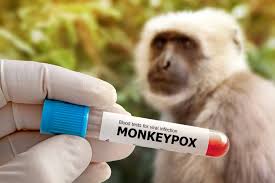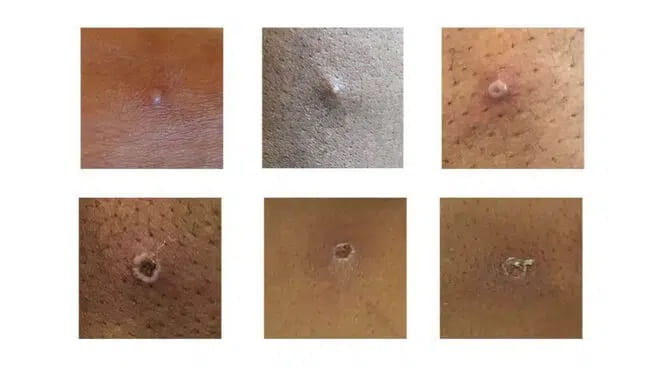
Learn about monkeypox.
With the purpose of reporting the first case of monkeypox in Cuba, we offer readers useful information that can help protect us and prevent the spread of this viral zoonosis caused by the monkeypox virus, which belongs to the genus Orthopoxvirus, and includes the Variola virus (causes smallpox).
According to information published on the official website of the World Health Organization (WHO), monkeypox was detected for the first time in humans in 1970 in Africa, and causes a rash or skin lesions that usually appear on the face, the palms of the hands and the soles of the feet.
As of May 2022, monkeypox cases have been reported worldwide in countries where the disease is not endemic, in addition to cases that continue to be reported in several countries where it is.
WHO Director-General Dr. Tedros Adhanom Ghebreyesus designated the multinational monkeypox outbreak as a Public Health Emergency of International Concern (PHEIC), on July 23, 2022.
Case studies have shown the identification of two genetically distinct strains of this virus: the Congo Basin (Central African) strain and the West African strain. Human infections with the West African strain appear to cause less severe disease compared with the Congo Basin strain.
Common symptoms of monkeypox include fever, headache, muscle aches, back pain, lack of energy, and swollen lymph nodes. This latter symptom is a distinctive feature of monkeypox that differentiates it from other diseases that may initially appear similar, such as chickenpox, measles, and smallpox.
These clinical manifestations are followed or accompanied by a rash that can last two to three weeks. The face, palms of the hands, soles of the feet, eyes, mouth, neck, groin, and genital or anal regions of the body are places where the rash can appear.
According to official reports, the number of injuries can range from a few to thousands. These can initially be flat, then fill with fluid and then scabs form, which, once dry, fall off, and a new layer of skin forms below.

Skin lesions caused by monkeypox. ECDC
These signs and symptoms may last two to three weeks and usually go away on their own, or supportive medications are needed to treat pain or fever. Health personnel insist that it is essential that people with monkeypox stay hydrated, eat well and get enough sleep.
Studies show that while some people have mild symptoms, others may have more serious symptoms, or medical complications, which can even cause death. Secondary skin infections, pneumonia, confusion and eye problems are some of the complications of monkeypox.
Vulnerable groups include newborns, children, pregnant women, and people with immunosuppression.
Regarding the transmission of monkeypox, there is consensus that it is transmitted mainly by direct or indirect contact with blood, body fluids, skin lesions or mucous membranes of infected animals.
Regarding secondary or person-to-person transmission, it can occur through close contact with infected secretions from the respiratory tract or skin lesions of an infected person, with objects contaminated with the patient's fluids or materials from the lesion.
Transmission occurs primarily by respiratory droplets. The infection is also transmitted by inoculation or through the placenta (congenital monkeypox). So far there is no evidence that the monkeypox virus is sexually transmitted. However, until transmission through sexual fluids is better understood, the use of condoms is recommended as a precautionary measure during sexual contact for 12 weeks after recovery from the disease.
In case of probable or confirmed monkeypox, to avoid transmission of the virus, it is recommended to isolate yourself from others until the pertinent evaluations and tests are carried out. If disease positive, isolation should be maintained until all lesions have scabbed over, the scabs have fallen off, and a new layer of skin has formed underneath.
For this reason, relatives and caregivers of confirmed cases should avoid direct contact with the lesions, wear gloves, wash their hands properly, and wear a surgical mask.
They also indicate taking care of the rash by letting it dry or covering it with a moist dressing to protect the area if necessary. Touching any sores in the mouth or eyes should also be avoided.
The materials consulted call for any person with symptoms compatible with monkeypox, or who has been in contact with someone diagnosed with this condition, to go to the doctor immediately, because although the mortality of this disease, compared to that of COVID-19 is low, if timely care is not received it can leave consequences for people's health. The case fatality rate for monkeypox has been around 3 to 6 percent

Infographic taken from Andina (Peruvian News Agency)